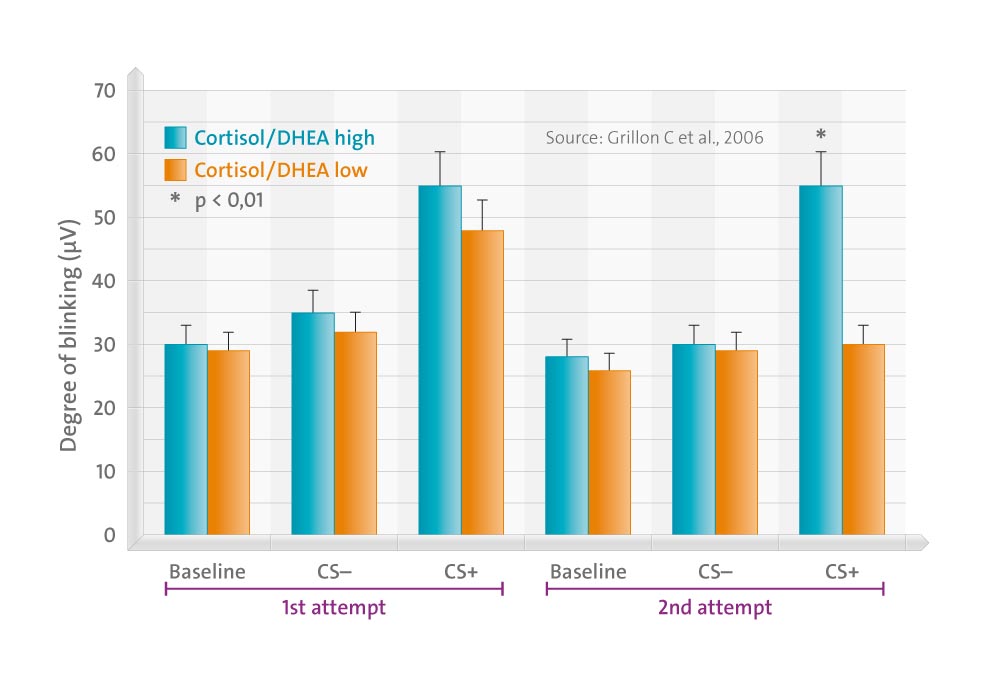Rationale
Fear conditioning reliably increases the startle reflex and stress hormones, yet very little is known about the effect of stress hormones on fear-potentiated startle. Cortisol and the sulfate ester of dehydroepiandrosterone (DHEA-S) are involved in stress and anxiety. Evidence suggests that low cortisol/DHEA-S ratio has a buffering effect on stress and anxiety in preclinical and clinical studies, suggesting that there may be a relationship between fear-potentiated startle and cortisol and DHEA-S activity.
Objective
The aim of the study was to examine whether there is a relationship between cortisol/DHEA-S ratio and fear-potentiated startle.
Methods
Thirty healthy subjects participated in a differential aversive conditioning experiment during which one of two stimuli (CS+) was paired with a shock, and the other was not (CS-). Conditioned responses were assessed with the startle reflex, defined as startle potentiation during CS+ compared to CS-. DHEA-S and cortisol levels were assayed from blood samples collected in both a baseline and an aversive conditioning session. Subjective state anxiety, arousal, and valence were assessed at various times during testing.
Results
Fear-potentiated startle was larger in individuals with high compared to low cortisol/DHEA-S ratio. Multiple regression analyses revealed that fear-potentiated startle was positively associated with cortisol and negatively associated with DHEA-S. There was no significant correlation between DHEA-S and cortisol levels.
Conclusion
These data suggest that cortisol and DHEA-S are involved in fear conditioning.
